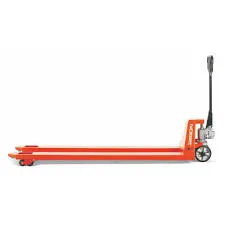


Industrial Fall Protection Equipment Ensuring Safety in the Workplace
In various industrial settings, the safety of workers is paramount. One significant aspect of maintaining a secure work environment is implementing effective fall protection measures. With numerous industries utilizing heights for construction, maintenance, and other tasks, the need for reliable fall protection equipment has never been more critical.
Understanding Fall Hazards
Fall hazards can be prevalent in industries such as construction, manufacturing, roofing, and warehousing. These environments often involve working at heights, whether on scaffolding, ladders, or rooftops. The Occupational Safety and Health Administration (OSHA) has identified falls as one of the leading causes of fatalities in the workplace. Thus, identifying potential risks and employing suitable fall protection equipment is vital in preventing accidents and ensuring worker safety.
Types of Fall Protection Equipment
1. Personal Fall Arrest Systems (PFAS) PFAS include three main components a lanyard, harness, and anchorage point. These systems are designed to catch a worker in the event of a fall, distributing the force over a larger area of the body to minimize injury.
2. Guardrails Installed around edges of elevated work surfaces, guardrails help prevent falls by acting as a physical barrier. They are often required in construction sites and other environments where individuals may work near ledges.
3. Safety Nets Safety nets are installed below work areas to catch workers in the event of a fall. They are particularly useful in large construction sites and can effectively reduce the potential for injury.
4. Harnesses and Lanyards A harness distributes the fall force over the body, while a lanyard connects the harness to an anchorage point. Different styles of harnesses are available, designed for various tasks and levels of comfort.
5. Lifelines Often used in conjunction with harnesses and lanyards, lifelines are ropes or cables that workers connect to for safety when moving horizontally along a roof or elevated surface. They provide mobility while maintaining safety.

6. Advanced Systems Newer innovations, such as self-retracting lifelines and descent devices, enhance safety and efficiency. These devices automatically take up slack in the event of a fall, reducing the distance the worker may drop.
Importance of Proper Training
The effectiveness of fall protection equipment largely depends on proper training and education. Workers must understand how to correctly use the equipment to maximize its benefits. Regular training sessions should be held to ensure all employees are well-versed in safety protocols, equipment use, and emergency procedures. Knowledge about the limitations and maintenance of fall protection gear can also significantly reduce risks.
Regulatory Standards and Compliance
Compliance with safety regulations is crucial in maintaining a secure working environment. OSHA provides clear guidelines regarding fall protection systems and their necessary implementations in various industrial sectors. Employers are responsible for ensuring that their fall protection systems meet or exceed the standard requirements and that workers are familiar with operational procedures.
Regular Inspections and Maintenance
To ensure the longevity and reliability of fall protection equipment, regular inspections are necessary. Employers should implement a scheduled maintenance program to address any wear and tear. Equipment that shows signs of damage or deterioration should be removed from service immediately and replaced to avoid potential hazards.
Conclusion
In conclusion, industrial fall protection equipment plays a vital role in safeguarding workers in environments with fall hazards. Identifying risks, utilizing appropriate equipment, and ensuring proper training and maintenance can create a safer workplace. Through committed efforts from employers and employees alike, tragic accidents resulting from falls can be significantly reduced, promoting a culture of safety and well-being in the industrial sector. By prioritizing fall protection, industries can not only comply with regulations but also ensure that their most valuable asset—the workforce—remains safe and healthy on the job.



